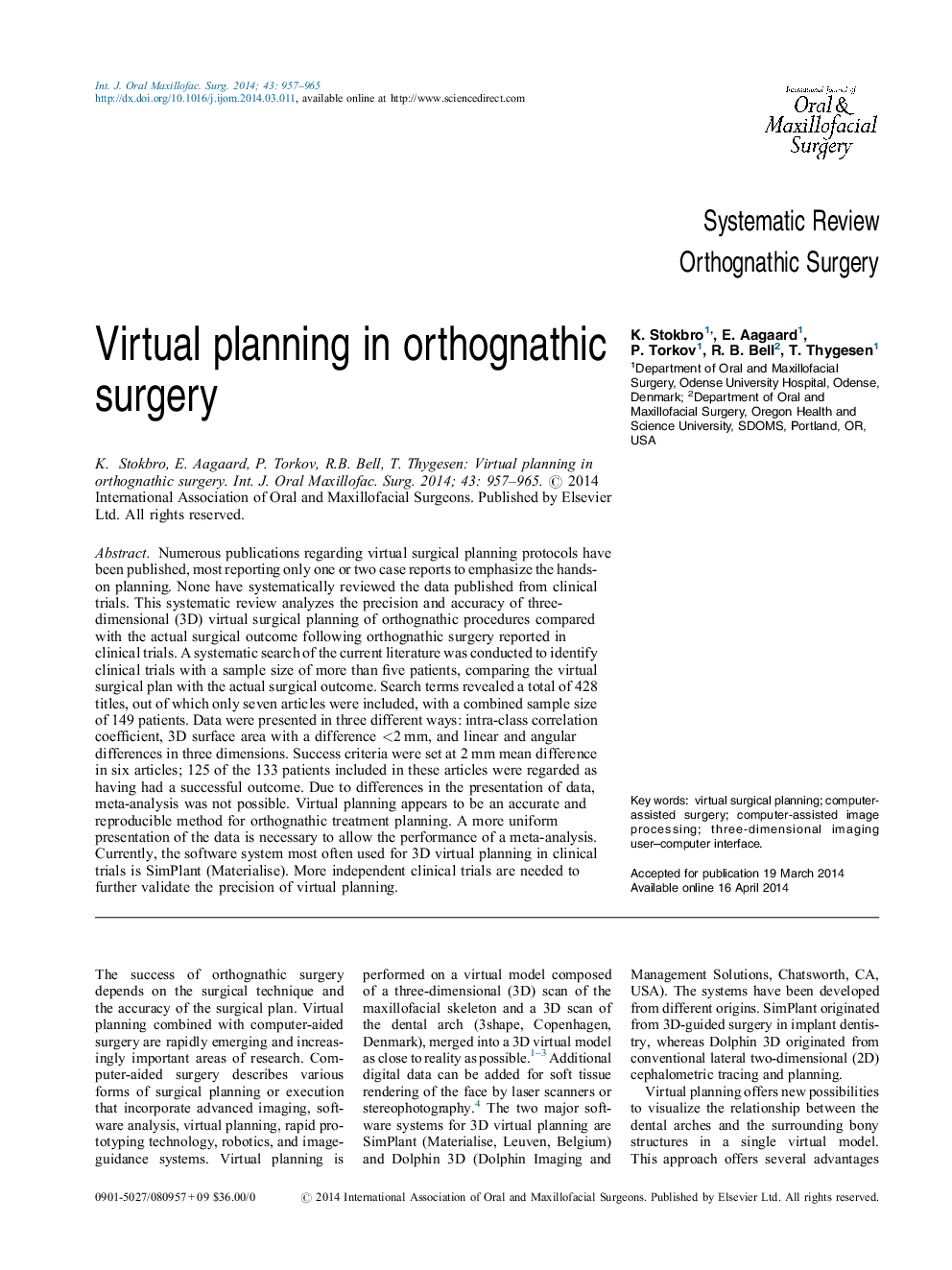| Article ID | Journal | Published Year | Pages | File Type |
|---|---|---|---|---|
| 3132148 | International Journal of Oral and Maxillofacial Surgery | 2014 | 9 Pages |
Numerous publications regarding virtual surgical planning protocols have been published, most reporting only one or two case reports to emphasize the hands-on planning. None have systematically reviewed the data published from clinical trials. This systematic review analyzes the precision and accuracy of three-dimensional (3D) virtual surgical planning of orthognathic procedures compared with the actual surgical outcome following orthognathic surgery reported in clinical trials. A systematic search of the current literature was conducted to identify clinical trials with a sample size of more than five patients, comparing the virtual surgical plan with the actual surgical outcome. Search terms revealed a total of 428 titles, out of which only seven articles were included, with a combined sample size of 149 patients. Data were presented in three different ways: intra-class correlation coefficient, 3D surface area with a difference <2 mm, and linear and angular differences in three dimensions. Success criteria were set at 2 mm mean difference in six articles; 125 of the 133 patients included in these articles were regarded as having had a successful outcome. Due to differences in the presentation of data, meta-analysis was not possible. Virtual planning appears to be an accurate and reproducible method for orthognathic treatment planning. A more uniform presentation of the data is necessary to allow the performance of a meta-analysis. Currently, the software system most often used for 3D virtual planning in clinical trials is SimPlant (Materialise). More independent clinical trials are needed to further validate the precision of virtual planning.
